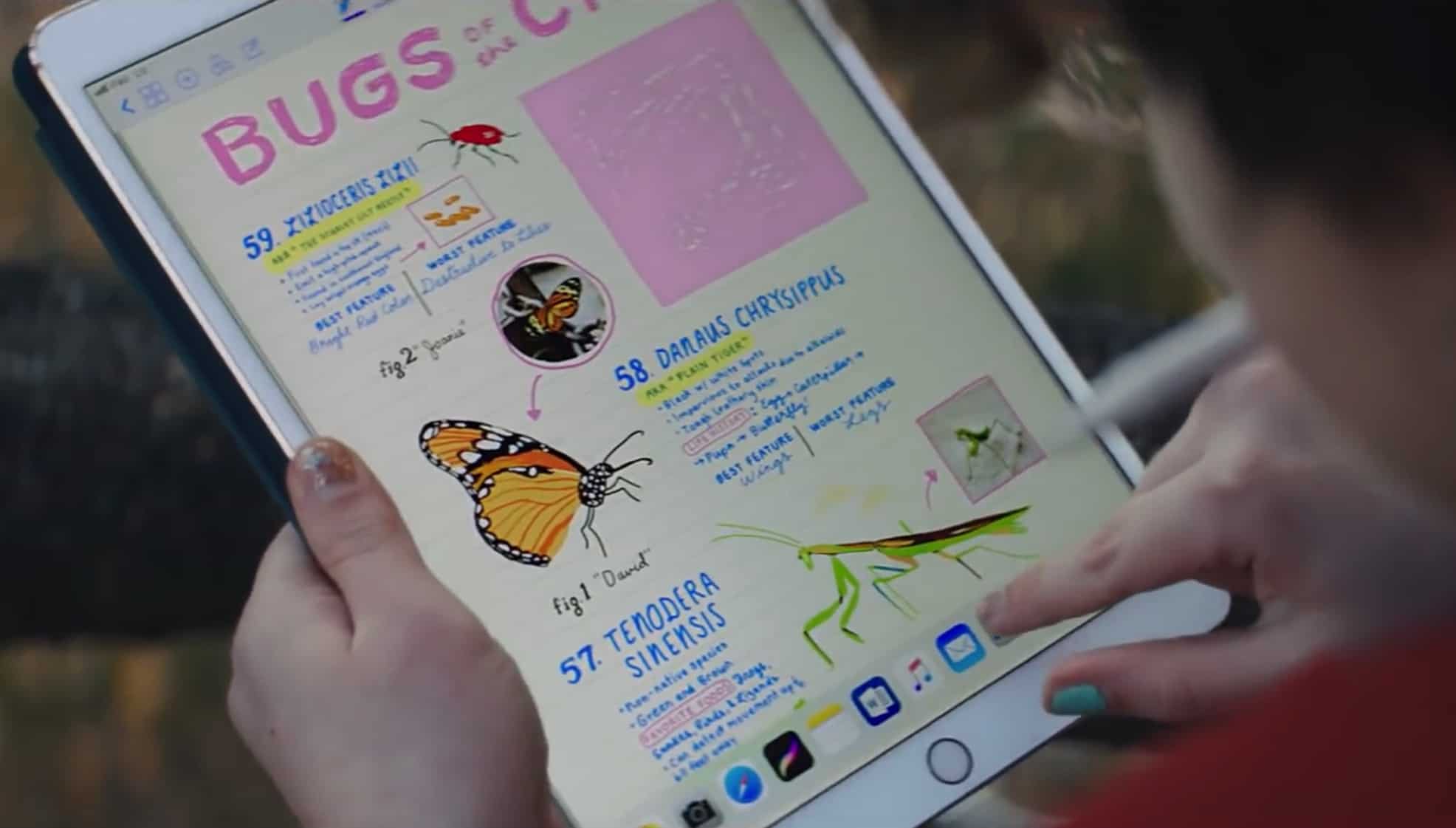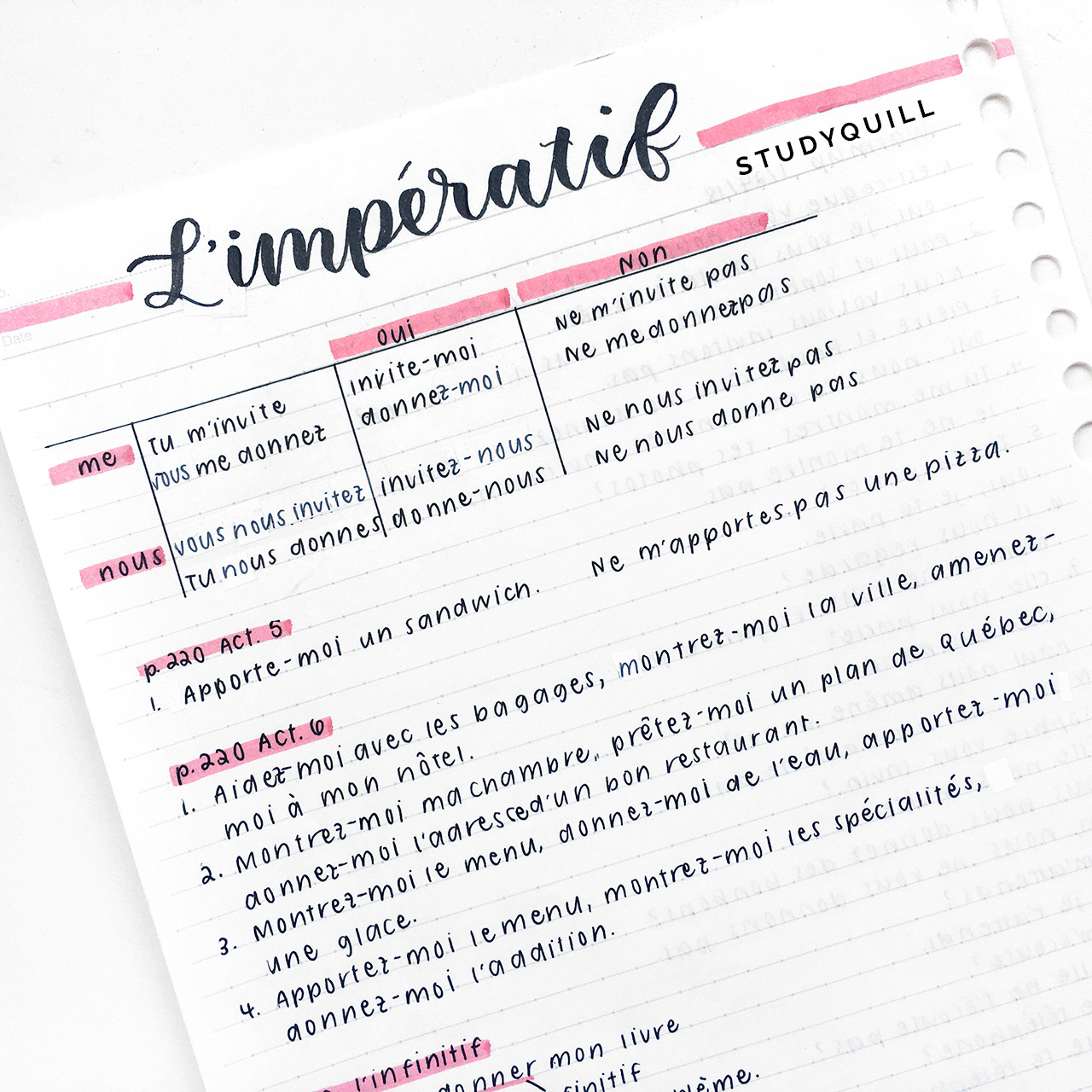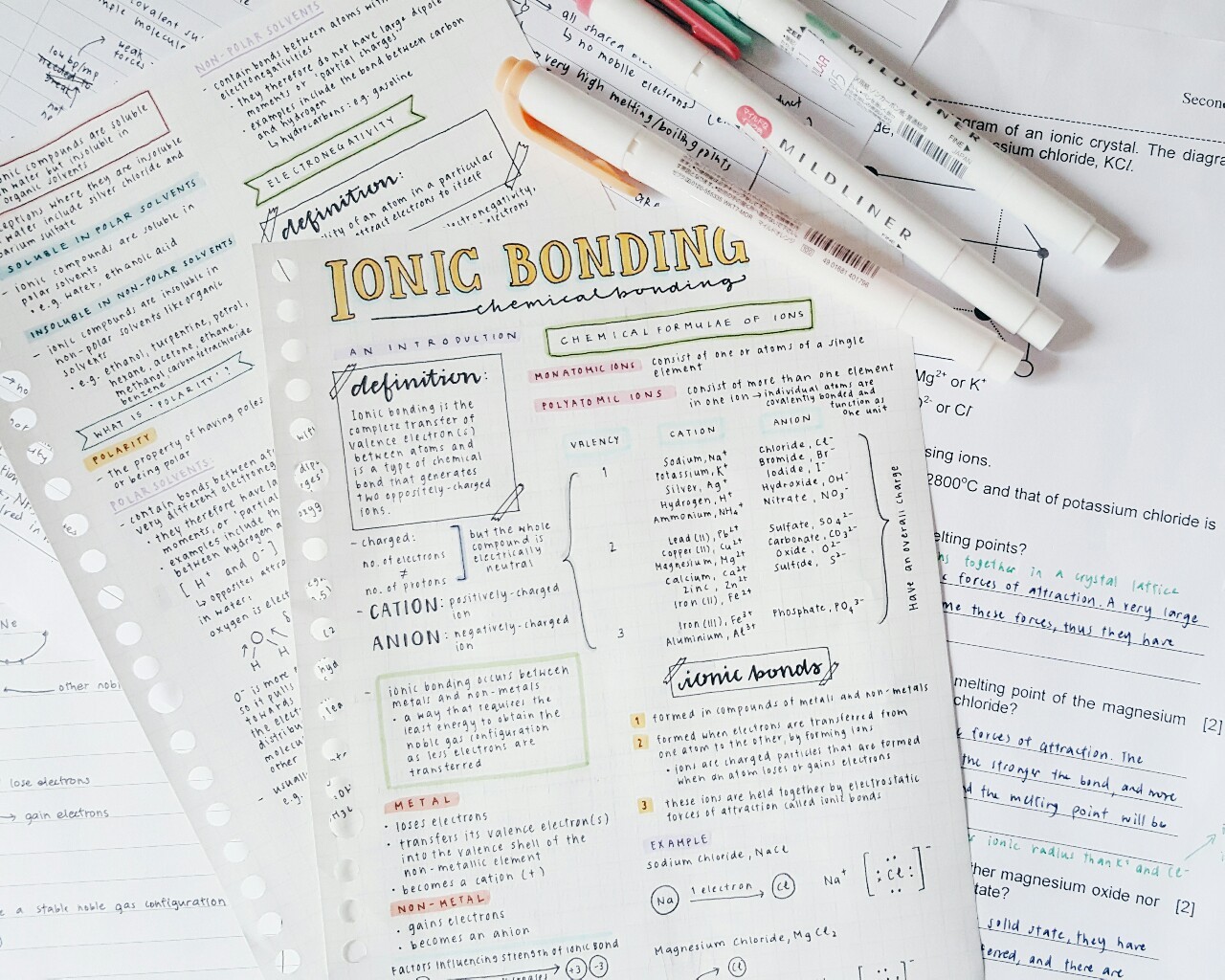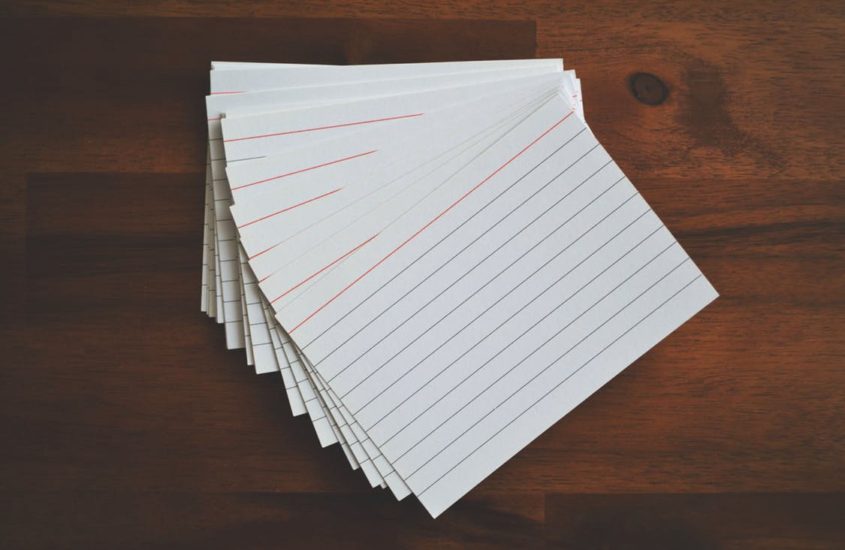
How To Study Flashcards With The Leitner Method
To study flashcards with the leitner method you need to create effective flashcards, assemble five boxes, make a study schedule and then spend some time every day studying your flashcards in their boxes.
What is the leitner method?
The leitner system is a study method developed in the 1970s based on theory behind spaced repetition and memory. It uses five study boxes that are labelled box one, box two, box three, box four and box five to space out your studying based on how well you remember information that is on flashcards. Each box has a study schedule for example, study everyday, study every second day etc. Flashcards move up boxes as they are answered correctly and back to box one if they are answered incorrectly.
The leitner system uses physical flashcards but there are also similar digital flashcard apps and software that are based on the same principle such as Anki and Studies.
What is spaced repetition?
Spaced repetition is used to conquer the forgetting curve by activating both your short and long-term memory. It is based on Hermann Ebbinghaus’ memory theory about how you retain information. Here is the graph of the rate at which we forget information after initially learning it:
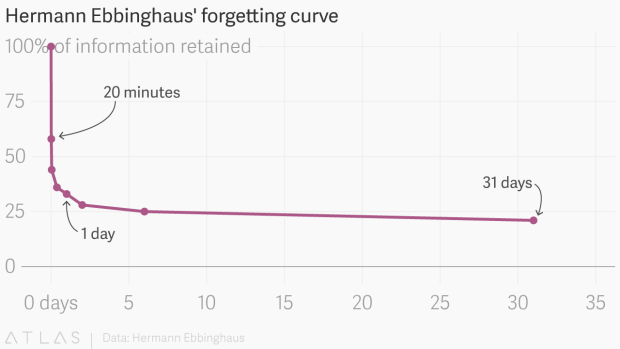
Instead of cramming lots of information over a short period of time, you should space it out as it is scientifically proven that you will retain a lot more information. By spacing out your study sessions, your brain has more time to absorb and process the information you have just learned and then reinforce it through the spaced learning. Here is a graph of spaced repetition in comparison to how much one retains:
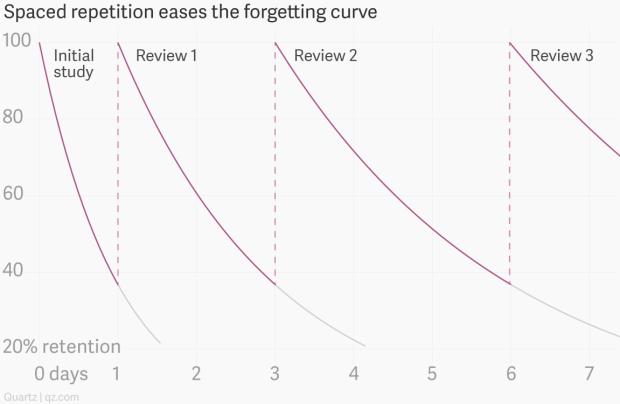
Research shows that cramming, for example repeating a fact twenty times over in one day is dramatically less effective than repeating something five times in a week. This is due to the fact that the brain needs time to form the synaptic structures and connections to do with the new information before it can be put into long-term memory.
That is why I suggest the flashcard Leitner boxes method as it is one way to adopt space repetition into your study routine.
You can learn more about this by reading my article on how to overcome the curve of forgetting.
How to make effective flashcards
Lots of people make the mistake and do not create effective flashcards. Here are some simple tips so you can avoid these common mistakes:
- Make your own flashcards. It is really important to make your own flashcards and not use someone else’s set because intaking information and putting it into your own words and methods of explaining that information is an integral part of the learning process. You will create strong neural pathways which will make it easier to retrieve what you have learned later on.
- One question and one answer per card. Some people make the mistake of putting too much information on their flashcards which easily leads to not learning content properly. You might get one aspect of what you have written on your flashcard correct but forgotten the other facts. When you check the answer in the back you might read the fact you forgot and say ‘I knew that’ when really you only recognised it. You don’t want to be faced with the illusion of competence by putting multiple facts on one index card.
- Use pictures/diagrams and words. Images can make your flashcards much more memorable. There is also a concept called the picture superiority effect which says that people remember imagery much better than words.
- Use mnemonic devices. A mnemonic device is anything that aids you in building an association between 2 bits of information. A commonly known mnemonic device to remember the order of the planets is My Very Elderly Mother Just Served Us Nine Pizzas. You can make your own mnemonics on your flashcards to aid your memory.
How does the leitner method work?
Basic Concept:
- Every flashcard starts in box one
- A flashcard moves forward one box if you get it correct
- A flashcard moves back to box one if you get it wrong, even if it is in the last box and you get it wrong it goes all the way back to box one.
- When a card reaches box five, it is retired and now is in your long term memory
- Use the leitner box schedule (see below) to know what box of flashcards to study today
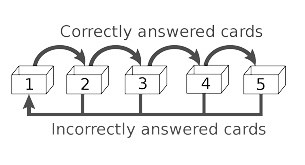
Leitner Box Schedule
- Box One: Study everyday
- Box Two: Study every other day
- Box Three: Study twice a week
- Box Four: Study once a week
- Box Five: Revise before a test/exam
Sometimes it is hard to remember which box to study each day so that is why I created a printable box study schedule. It is a calendar for a month labelled Monday to Sunday where you can write what box you need to study each day within the table boxes. There is also a generic 2 week study schedule example included in the printable pack which you have the option of following.
How do you make a leitner box?
To make it easier for you to start using this method of study I have created printable study boxes which you can find here!
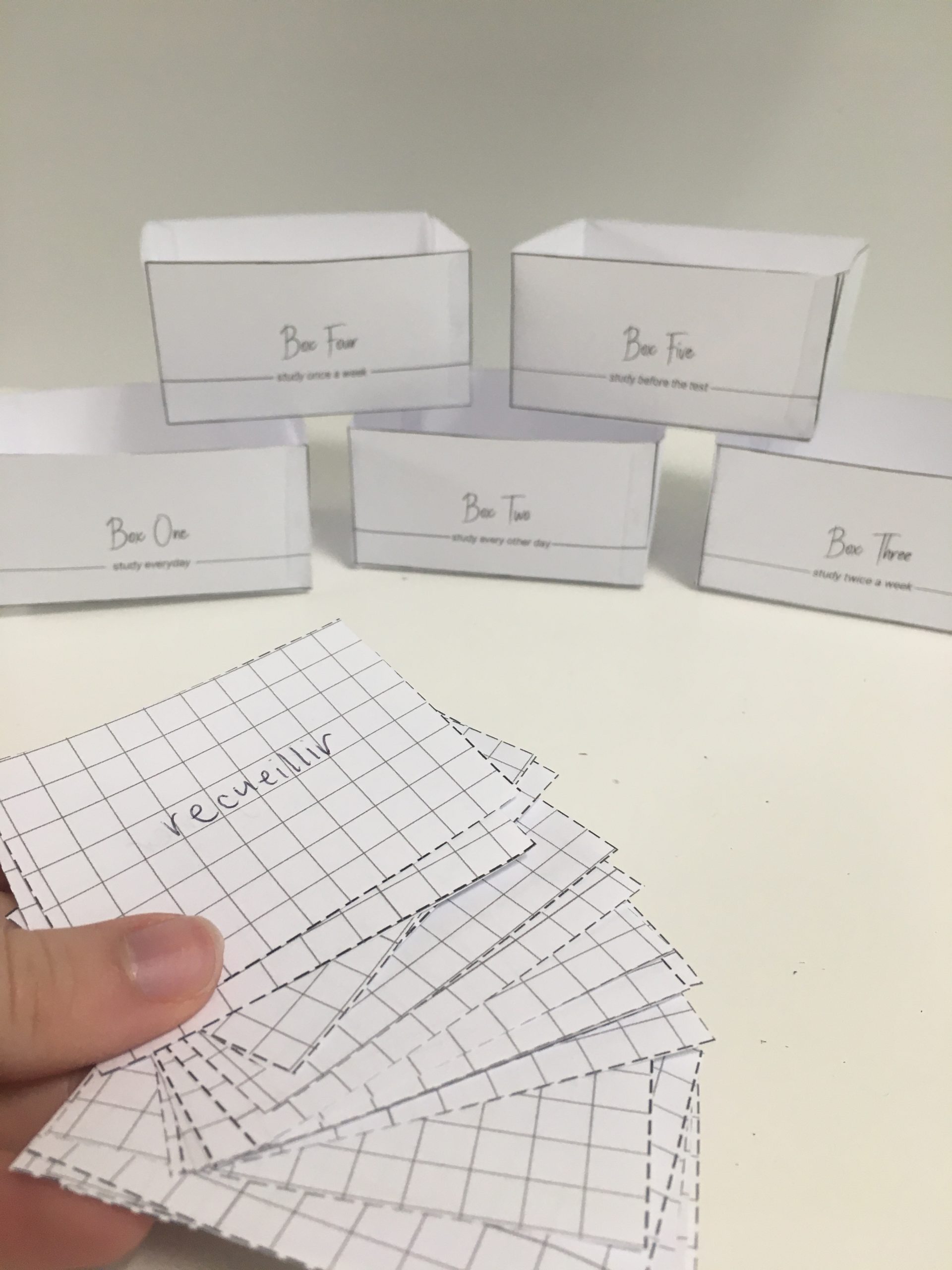
It is really simple to make a leitner box. All you need to do is print out the template, cut out all five boxes, assemble the boxes with sticky tape or glue, make some flashcards and then start studying them according to the method above!
Printable Study Boxes In Depth
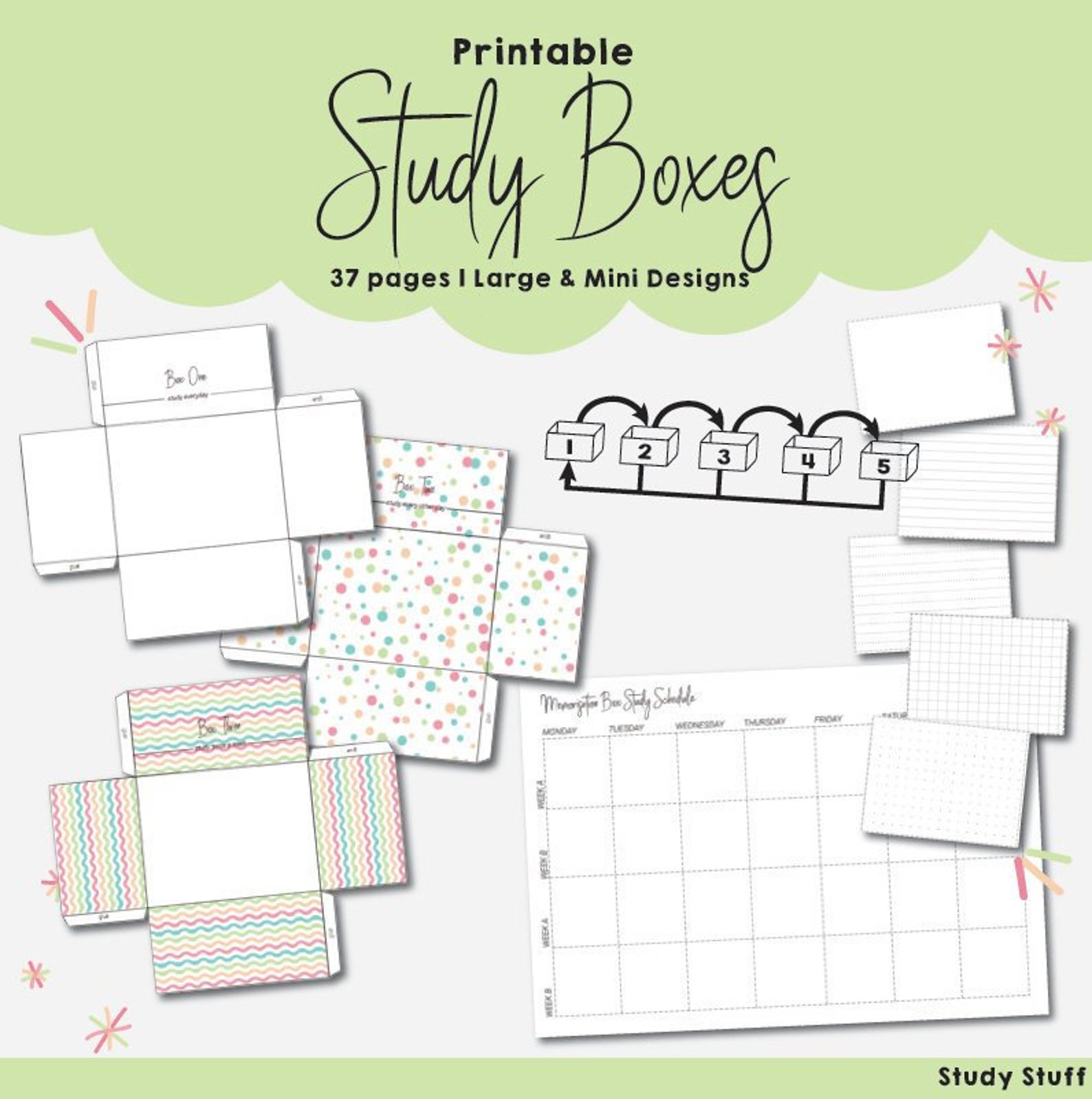
Includes one PDF with 37 pages of the Study Box Printable.
USE THIS PRINTABLE PACK TO:
- Implement the theory of spaced-repetition into your study schedule
- Help you retain information better over a longer period of time
- Beat the Forgetting Curve
- Create Question-Answer Flashcards for Any Subject/Study Material. E.g. Vocabulary, Scientific Diagrams, Maths Formulas, Definitions, Historical Dates, Fast Facts etc.
WHAT’S INCLUDED:
37 Pages
- Instruction Page on How to Use The Flashcards & Boxes Effectively and How to Create a Spaced Repetition Schedule, 1 page
- Your Own Spaced Repetition Schedule to Personalise & An Example Schedule, 1 page
- Curve of Forgetting Study Planner for Revising Study Notes, 1 page
- Mini Flashcard Sets (Blank, Lined, Dotted Lined, Square Grid & Dot Grid) – 18 per page, total 5 pages
- Large Flashcard Sets (Blank, Lined, Dotted Lined, Square Grid & Dot Grid) – 8 per page, total 5 pages
- Mini Boxes Labelled Box One to Five with Study Prompts (Blank, Dots & Squiggly Line Designs) – 2 per page, total 9 pages
- Large Boxes Labelled Box One to Five with Study Prompts (Blank, Dots & Squiggly Line Designs) – 1 per page, total 15 pages
Before You Go!
Are you passionate about language learning?
Be sure to check out my article on the EASIEST way to learn a language by yourself! and my Digital Language Learning Planner!
If you take notes using your iPad, you need to know these 12 iPad note taking tips! They will make …
There are many different note taking methods that can work well for language learning. To take effective notes for language …
To take pretty notes you need to firstly choose a consistent colour scheme. Next you should draw an eye catching …
To take notes on a PDF on an iPad you need to use a note taking or PDF reading app …
To get motivated to do school work one should set SMART goals, work in a motivating environment, break large projects …
To take aesthetic notes one needs to choose a consistent colour scheme, use eye catching titles and headers, invest in …

